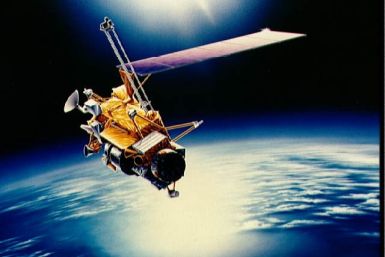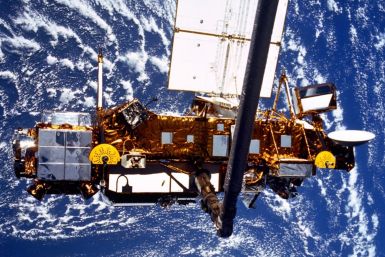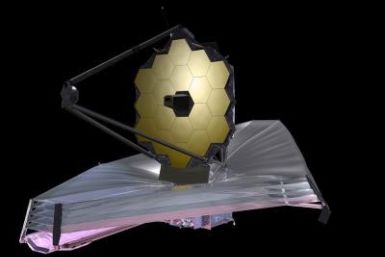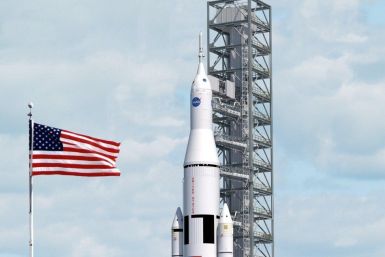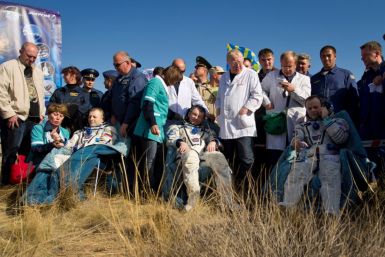A defunct NASA satellite is expected to plunge back to earth on Friday, raising concerns that blazing hot debris may shower down on the unsuspecting terrestrial population.
For the first time, a map of the salinity of the ocean surface, which is a key component of the earth's surface, has been produced by NASA's new Aquarius instrument. This has provided an early glimpse of the mission's anticipated discoveries.
Finally NASA’s dead satellite will hit earth today. Now it is just a matter of few hours when a few parts of the world will witness a spectacular sky show.
Top ten most surprising things said by President of Iran, Mahmoud Ahmadinehad, during his speech to the UN on Sept. 22, 2011.
A defunct satellite originally meant to analyze the Earth’s ozone layer is expected to reenter the Earth’s atmosphere and crash land Friday, according to reports from NASA released Thursday.
Since the launch of Planet Hunters in December, 40,000 web surfers have helped in the search for new planets by crunching data collected by NASA.
A defunct atmosphere-monitoring satellite is expected to enter earth's atmosphere, break into pieces and smack down upon Earth on Friday.
NASA astronomers, who used Wide-field Infrared Survey Explorer and captured a black hole's flaring active jets, have been benefited with the new rare discovery in many ways.
The weather forecast for North America is a good one on Friday: Little chance of falling satellite debris.That may seem like a lark, but it's not, since NASA's Upper Atmosphere Research Satellite, or UARS, will likely crash into Earth on Friday. The satellite is the size of a bus, and it's the biggest to make an uncontrolled re-entry into Earth's atmosphere in decades, NASA officials say.
A dead 6.5 ton NASA UARS satellite would make its re-entry in to Earth on Friday, Sept.23, bringing along a chance to watch a spectacular sky show.
Researchers have found that geyser-like icy jets released by Saturn's moon, Enceladus, strongly influences the chemical composition of its parent planet.
The six-ton defunct Upper Atmosphere Research Satellite will plunge to Earth sometime on Friday afternoon EDT, and the U.S. wil be spared any debris, NASA said in its latest update.
NASA has unveiled plans of $1.6 billion to buy a complete range of spacecrafts, launchers, mission operations and ground support by the middle of the decade to transport astronauts to the International Space Station and low Earth orbit.
Despite cost overruns, the James Webb Space Telescope, which is scheduled to replace the heralded Hubble, should still fly, plead NASA officials and leading astronomers.
NASA astronomers were able to get a closer look at the inner environment nearing the base of a black hole's jet through infrared observation. By using the agency's Wide-field Infrared Survey Explorer (WISE) astronomers captured some rare data of a flaring black hole, illuminating new details about these powerful stellar-mass black holes and their raging jets.
For the first time NASA astronomers using Wide-field Infrared Survey Explorer (WISE) captured the innermost part of the black hole's (GX 339-A) active jets.
The biggest satellite to fall to Earth in decades will come crashing down in the new few days. And while odds are not good that a person will be hit -- officials can't rule that out.
The asteroid which is generally considered responsible for the termination of the dinosaurs possibly couldn't have been the cause as per observations from NASA's Wide-field Infrared Survey Explorer (WISE) telescope show.
A defunct NASA satellite the size of a bus is set to plunge through the Earth's atmosphere sometime this weekend, with officials still uncertain exactly where it is going to land.
NASA unveiled its plans to buy a complete range of spacecrafts, launchers, mission operations and ground support by the middle of the decade to provide astronauts with transportation service to the International Space Station and low-Earth orbit.
Astronauts in space are exposed to a newly identified medical condition, something that NASA should consider seriously. It is the blurring vision of some of the astronauts who have spent months in space that has made NASA think about possible impacts it may have on long-term space trips.
Watch the skies this Friday as a defunct NASA satellite is expected make a fiery re-entry to the Earth's atmosphere.










